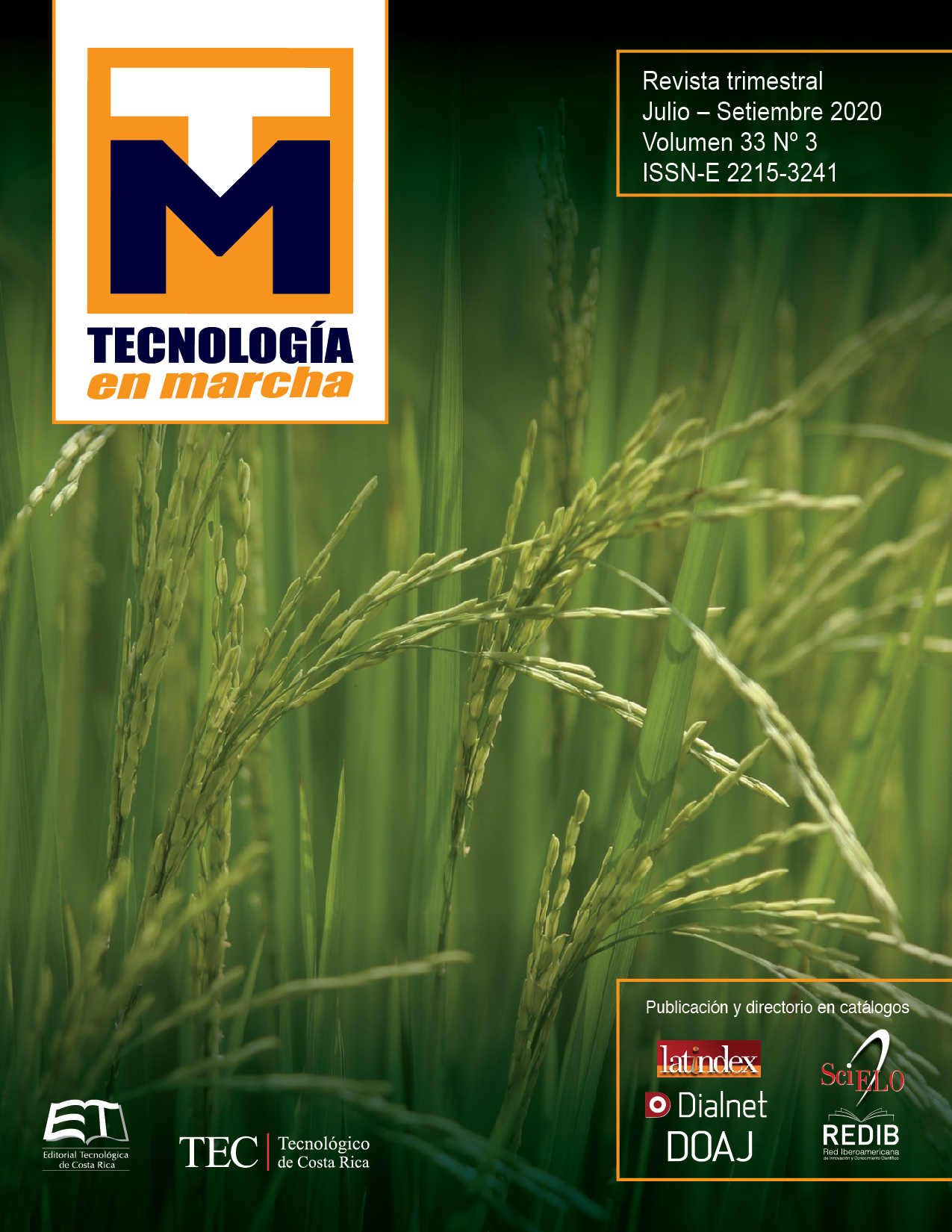Indirect methodology for life-span estimation of power transformers from the evaluation of its dielectric materials
Main Article Content
Abstract
An adequate and reliable operation of the power transformers in the electrical networks constitutes a determining factor in the continuity of service, which justifies its attention in the evolution of its integrity, defined by its dielectric system mainly conform by oil and paper. The research focused on the analysis of chemical tests applied to a group of 10 MVA power transformers with different periods of operation and their correlation with the actual aging estimated by the Degree of Polymerization (DP) and 2-furaldehyde (2-FAL), in addition to mechanical stress tests applied to the dielectric paper. This stress, measured in the dielectric paper, presented a reduction of 74.49% with respect to the minimum value established by the IEC (80 MPa) and a DP of 88.4. The operating conditions of each transformer along with the percentage of humidity of the dielectric paper, the total and Oxygen gases measured in ppm, allowed the estimation of 2-FAL indirectly. The approximate results of the Degree of Polymerization were enough for its evaluation as a “slightly aged” condition. So, the approximation of the maximum life-span was 27 years. This estimate is consistent with the low levels of measured combustible gases (less than 700 ppm) and Oxygen.
Article Details

This work is licensed under a Creative Commons Attribution-NonCommercial-NoDerivatives 4.0 International License.
Los autores conservan los derechos de autor y ceden a la revista el derecho de la primera publicación y pueda editarlo, reproducirlo, distribuirlo, exhibirlo y comunicarlo en el país y en el extranjero mediante medios impresos y electrónicos. Asimismo, asumen el compromiso sobre cualquier litigio o reclamación relacionada con derechos de propiedad intelectual, exonerando de responsabilidad a la Editorial Tecnológica de Costa Rica. Además, se establece que los autores pueden realizar otros acuerdos contractuales independientes y adicionales para la distribución no exclusiva de la versión del artículo publicado en esta revista (p. ej., incluirlo en un repositorio institucional o publicarlo en un libro) siempre que indiquen claramente que el trabajo se publicó por primera vez en esta revista.
References
R. Polansky et al, “Comparison of the mineral oil lifetime estimates obtained by differential scanning calorimetry, infrared spectroscopy, and dielectric dissipation factor measurements,” Thermochimica Acta, vol. 647, pp. 86-93, 2017.
A. Moreno Villa, “Estandarización E Implementación De La Norma ASTM D-4243 Para La Determinación Del Grado De Polimerización Del Papel Eléctrico (Nuevo Y Usado) Como Aislante En Transformadores De Potencia Por El Método Del Promedio Viscosimétrico;” , Universidad Tecnológica de Pereira.
Margalló Gasco, “Diagnóstico Del Consumo De Vida De Un Transformador a Través Del Análisis De Compuestos Furánicos.”, 2012.
H. M et al, Guía Para El Mantenimiento Del Transformador. (3era ed ed.) Estados Unidos: Transformer Maintenance Institute, 2005.
R. Córdoba Salazar, “Desarrollo De Un Programa De Mantenimiento Basado En Confiabilidad Para Transformadores De Potencia.”, Universidad de Costa Rica, 2006.
M. Emsley et al, “Degradation of cellulosic insulation in power transformers. Part 4: Effects of ageing on the tensile strength of paper,” IEE Proceedings - Science, Measurement and Technology, vol. 147, (6), pp. 285-290, 2000.
D. J. T. Hill et al, “A study of degradation of cellulosic insulation materials in a power transformer. Part 2: tensile strength of cellulose insulation paper,” Polymer Degradation and Stability, vol. 49, (3), pp. 429-435, 1995.
C. Homagk, K. Mossner and T. Leibfried, “Investigation on degradation of power transformer solid insulation material,” in Oct 2008.
G. Jiménez-Araya and G. A. Gómez-Ramírez, “Comportamiento de los aislamientos sólidos de transformadores de potencia en condiciones ambientales no controladas,” Revista Tecnología En Marcha, vol. 29, (3), 2016.
M. Emsley, “Review of chemical indicators of degradation of cellulosic electrical paper insulation in oil-filled transformers,” IEEE Proceedings - Science, Measurement and Technology, vol. 141, (5), pp. 324, 1994.
Gholami, M. Mirzaie And H. R. Tayebi, “Insulation condition assessment of power transformers using accelerated ageing tests,” Turkish Journal of Electrical Engineering and Computer Sciences, vol. 17, (1), pp. 39-54, 2009.
D. J. T. Hill et al, “A study of degradation of cellulosic insulation materials in a power transformer. Part 2: tensile strength of cellulose insulation paper,” Polymer Degradation and Stability, vol. 49, (3), pp. 429-435, 1995.
D. Martin et al, “An Updated Model to Determine the Life Remaining of Transformer Insulation,” IEEE Transactions on Power Delivery, vol. 30, (1), pp. 395-402, 2015.
Johana Tatiana Sarria-Arias, Natalia Andrea Guerrero-Bello and Edwin Rivas-Trujillo, “Estado del arte del análisis de gases disueltos en transformadores de potencia,” Revista Facultad De Ingeniería, vol. 23, (36), pp. 105-122, 2014.
W. Flores et al, “Vida de transformadores de potencia sumergidos en aceite: Situación actual. Parte II. Correlación entre resultados de ensayos físico-químicos,” IEEE Latin American Transactions, vol. 5, (8), 2007.
Hillary, W. D. A. G et al, “A tool for estimating remaining life time of a power transformer,” in May 2017.
T. V. Oommen, “Moisture equilibrium in paper-oil insulation systems,” in Oct 1983.
F. Ortiz et al, “Estimating the age of power transformers using the concentration of furans in dielectric oil,” Renewable Energy and Power Quality Journal, pp. 1011-1015, May 2016.
R. A. Prasojo et al, “Transformer Paper Expected Life Estimation Using ANFIS Based on Oil Characteristics and Dissolved Gases (Case Study: Indonesian Transformers),” Energies, vol. 10, (8), pp. 1135, 2017.

